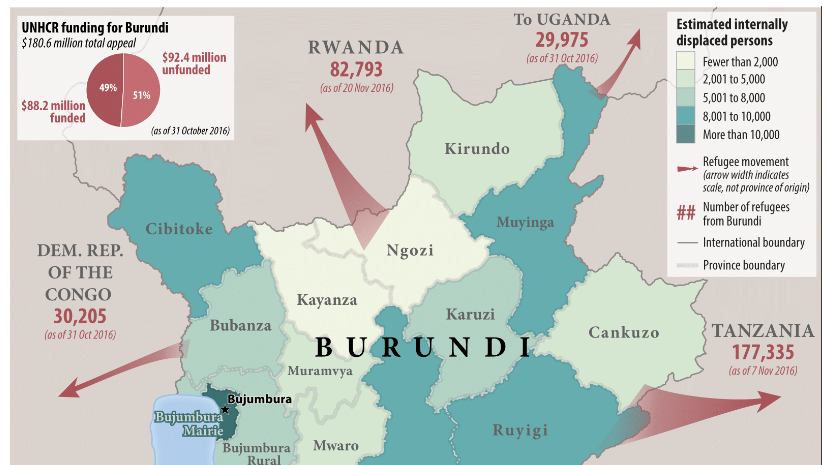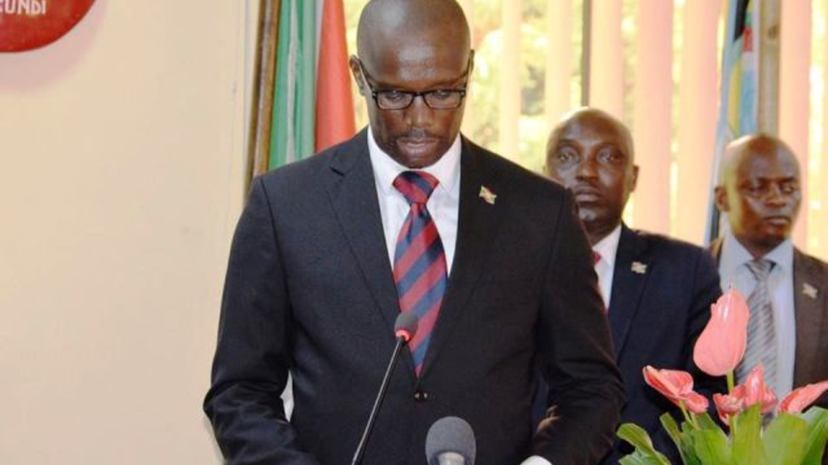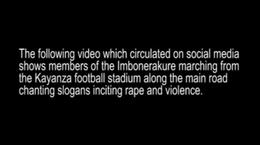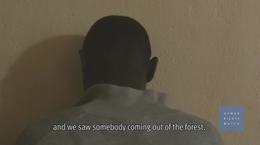Burundi
In 1923, the League of Nations mandated to Belgium the territory of Ruanda-Urundi, consisting of modern-day Rwanda and Burundi. Following World War II, Ruanda-Urundi became a United Nations Trust Territory under Belgian administrative authority.
In 1962, Burundi declared independence and has since faced political instability with extremely important ethnic dimensions. Long standing ethnic divisions between the Hutu and the Tutsi ethnic groups in Burundi eventually led to a civil war killing at least 300,000 between 1993 and 2005. The conflict is seen as formally ending with the swearing in of Pierre Nkurunziza in August 2005 facilitated by The Arusha Peace and Reconciliation Agreement.
In April 2015, President Pierre Nkurunziza announced his candidacy for a third term in office despite the constitutional limitation and provisions of the Arusha Accords. This led to growing political instability which revived existing tensions.
The decision prompted a failed coup in May 2015 and a government crackdown on political opponents marked by state sponsored killings, disappearances and torture. Since then, hundreds of Burundians have been killed, abducted, tortured, raped and arbitrarily imprisoned. Hundreds of thousands have fled to neighboring countries.














